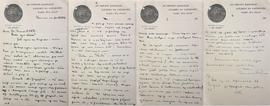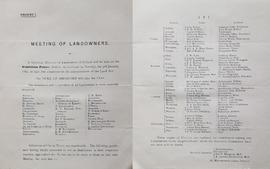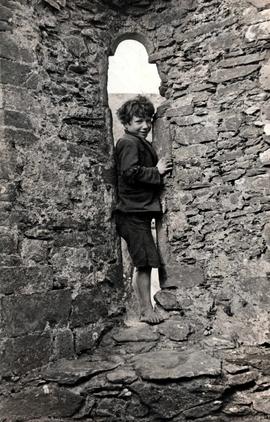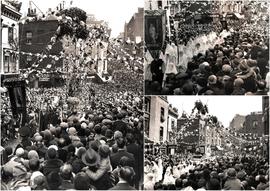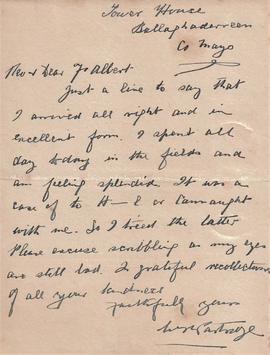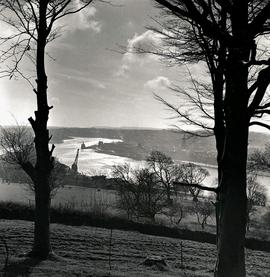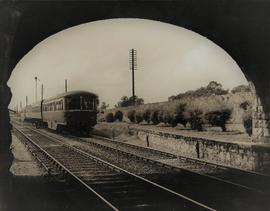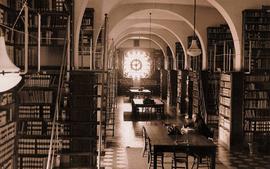Letter from Frank Ryan (Proinsias Ó Riain), An Cumann Gaelach, University College Dublin, to Br. Senan Moynihan OFM Cap.
Letter from Aodh de Blacam to Fr. Senan Moynihan OFM Cap. referring to proofs of his forthcoming article on his recent visit to Rome. He also refers to his 'rosaries' from Fr. Henry Edward George Rope. De Blacam concludes 'My patient is marvellously better. I myself lost 1 stone since New Year, not missing it'.
Circular re a general meeting of landowners ‘to take into consideration the administration of the Land Act’. James Hamilton, 2nd Duke of Abercorn (1838-1913) presided over the meeting. The circular includes a list of names of individuals acting as distributors for tickets for the meeting.
A view of a boy in the window of the ruined medieval church at Kilmalkedar near Dingle in County Kerry in about 1940. The site of Kilmalkedar consists of a large ecclesiastical complex with archaeological remains dating from the early to late medieval period. It is dedicated to a little-known local saint called Maolcethair. At the centre of this site is the twelfth century Hiberno-Romanesque Church. According to tradition, those suffering from rheumatism, ‘falling sickness’ (epilepsy), or other ills might be restored to health by passing three times through the window.
Images of the procession of friendly societies in the Italian Quarter of Hatton Garden in London in July 1931. The procession of Our Lady of Mount Carmel – held on the Sunday after 16 July – was Little Italy’s most important cultural event. Except during wartime, it has taken place annually since at least 1896. The procession was one of the first public manifestations of Catholicism given legal sanction since the Reformation in the sixteenth century. Queen Victoria was said to have granted special permission to the local police in Holborn to allow the parade to take place.
A letter from William Partridge to Fr. Albert Bibby OFM Cap. referring to his arrival in County Mayo.
A view of Waterford city from the opposite (Ferrybank) side of the River Suir in about 1955.
An image of a Córas Iompair Éireann diesel locomotive pulling into a station.
A view of the Irish Lightship ‘Comet’ at Dún Laoghaire in about 1960. The ship was built in 1904 by J. Reid in Glasgow and measured ninety-six feet in length and twenty-three feet in breadth. The light vessel was decommissioned in 1965 and sold (for £7,000) to the shipbroking firm of Turner and Hickman in Glasgow. The ship later had a colourful history as an off-shore pirate radio station used by Radio Scotland.
An image of the Capuchin Central Library (Biblioteca Centrale Cappuccini) in Rome in about 1930. Founded in the second half of the nineteenth century, the library was at this time located on the Via Boncompagni in the centre of Rome. In 1968, the library was relocated to the International College of St Lawrence of Brindisi situated on the outskirts of the city. The library has a stock of books and documents totalling 120,000 catalogued items including works by Capuchin authors, material on the early history and ministries of the Order, Franciscan publications, and many rare medieval and early modern books and items of ecclesiastical interest.
